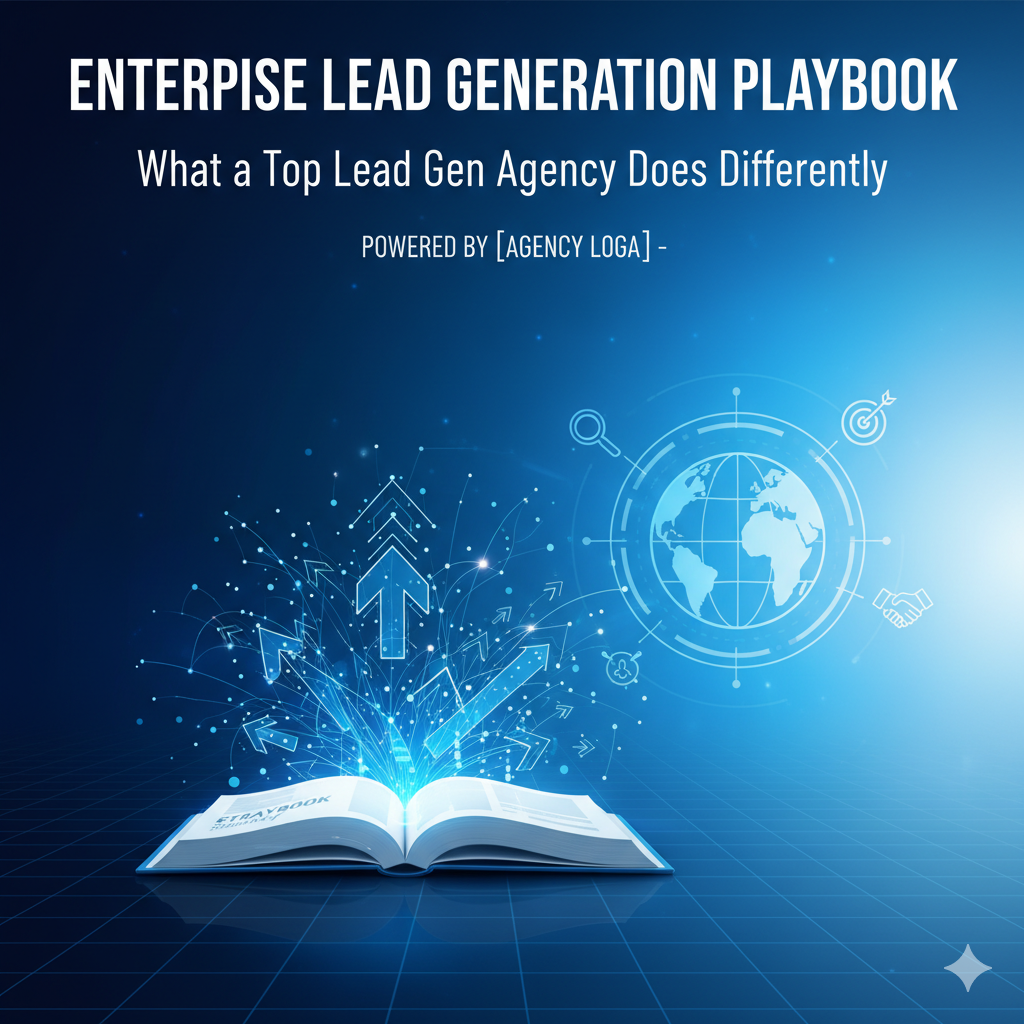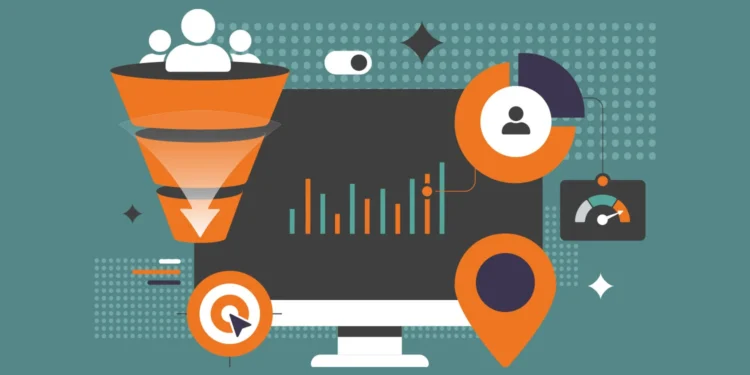You know, the world of B2B sales and marketing isn’t just fast-paced anymore; it’s a full-on sprint. Every enterprise is chasing qualified leads, but the game’s changed. What worked even a few years ago might just be background noise today. In fact, a recent study by HubSpot found that lead generation costs rose by 17% for SMBs in 2024 (HubSpot) (Source), indicating that efficiency and precision are more critical than ever, especially for larger organizations. So, how do some companies consistently fill their pipeline with high-value prospects while others struggle? It really boils down to a playbook that goes beyond the basics, one that’s implemented by truly top-tier lead generation companies. It’s not just about getting more leads; it’s about getting the right leads. And it’s about doing it efficiently and scalably. We’re talking about a strategic approach that turns prospecting into a predictable, revenue-driving machine. This isn’t just about tweaking a few campaigns; it’s about a fundamental shift in how you think about attracting and nurturing potential customers. A truly effective lead generation agency doesn’t just send emails; they architect entire growth ecosystems.
Data Depth and ICP Enrichment

Let’s be honest, everyone talks about data, right? But what does “data-driven” actually mean in the context of enterprise lead generation? For a top-tier lead gen agency, it means going way beyond surface-level demographics. We’re talking about an obsession with understanding the Ideal Customer Profile (ICP) at a granular level, enriching that data, and then continuously refining it. It’s the difference between knowing a company’s industry and knowing their exact tech stack, recent funding rounds, hiring trends, and even their internal challenges based on public sentiment or industry reports. This isn’t just about buying a list. It’s about leveraging advanced analytics and AI to pull insights from a multitude of sources. Think about it: firmographic data, technographic data, intent data, and even psychographic data all mashed together. This deep dive helps identify not just who to target, but why they’re likely to buy right now. According to Marketing Dive, companies that prioritize data quality see a 60% increase in lead-to-opportunity conversion rates (Marketing Dive) (Source). That’s a significant jump, and it highlights why data depth is non-negotiable. Here’s what that looks like in practice:
- Comprehensive Data Stacks: Integrating CRM data with third-party data providers, social listening tools, and web analytics.
- Predictive Scoring Models: Using machine learning to score leads based on their likelihood to convert, not just their job title.
- Continuous ICP Refinement: Regularly reviewing and updating the ICP based on sales feedback and market shifts, ensuring your targeting stays razor-sharp.
And it’s this relentless pursuit of data quality and depth that sets the stage for everything else. Without it, you’re essentially guessing.
Personalization at Scale
Once you’ve got that rich data, the next step is personalization. But for enterprise-level lead generation, “personalization” isn’t just swapping out a name in an email. It’s about tailoring the entire buyer journey, from the initial touchpoint to the sales conversation, based on those deep ICP insights. This means understanding their specific pain points, their industry’s unique challenges, and even their role within the decision-making unit. Think about it: a CFO cares about ROI and cost savings, while a Head of Engineering is focused on integration and technical specs. Your messaging, your content, and even the channels you use should reflect these distinct priorities. This level of personalization, when done right, makes prospects feel truly understood. It builds trust and relevance right from the start. Platforms like BrandBooster.ai, a data-driven lead generation agency, help businesses automate lead pipelines and improve conversion quality using AI insights, enabling this kind of personalization at scale without overwhelming your team. It’s about crafting experiences that resonate, not just campaigns that broadcast.
Pipeline Forecasting and Sales Alignment
One of the biggest differentiators for a top lead gen agency isn’t just about generating leads; it’s about generating predictable revenue. This means tight alignment between marketing and sales, built on a foundation of shared goals, clear definitions, and robust pipeline forecasting. Many lead generation companies focus solely on MQLs, but a sophisticated enterprise approach prioritizes SALs (Sales Accepted Leads) and SQLs (Sales Qualified Leads). We’re talking about a unified view of the pipeline, from initial outreach to closed-won deals. This isn’t just a monthly sync-up meeting; it’s a continuous feedback loop. Marketing needs to know what types of leads are converting best for sales, and sales needs to understand the marketing efforts behind each lead. This collaborative environment ensures that the leads being generated are actually sales-ready and contribute to predictable revenue. For instance, companies with strong sales and marketing alignment achieve 20% higher revenue growth (Think with Google) (Source). That’s a powerful incentive to get everyone on the same page. Key elements of strong sales alignment include:
- Shared Lead Definitions: Everyone agrees on what constitutes an MQL, SAL, and SQL. No more “these aren’t good leads!” finger-pointing.
- Closed-Loop Reporting: Marketing tracks leads all the way through the sales cycle, understanding which channels and campaigns yield the highest-value customers.
- Predictive Analytics for Pipeline: Using historical data and current lead velocity to forecast future revenue, giving leadership a clear view of what’s coming.
This proactive approach to pipeline management and forecasting turns lead generation into a strategic lever for business growth, rather than just a cost center. It’s how a good lead generation service becomes indispensable.
Examples From Leading Agencies
So, what does this all look like when it’s put into action by leading agencies? Take, for example, a B2B SaaS company that was struggling with low conversion rates from its traditional outbound efforts. They partnered with a specialized lead gen agency that focused on integrating intent data with their existing CRM. This agency didn’t just provide contact lists; they identified companies actively researching solutions related to the SaaS provider’s offerings. By layering technographic data, they pinpointed decision-makers within those companies who were using complementary (or competitive) technologies. The result? Their sales team received leads that were not only a perfect ICP match but also demonstrated clear buying intent. The personalized outreach, informed by deep data, saw a 3x increase in meeting booked rates compared to their previous cold outreach. It wasn’t about sending more emails; it was about sending the right emails to the right people at the right time. This targeted approach dramatically reduced wasted sales efforts and significantly improved ROI. Another example involves a large manufacturing firm looking to expand into new markets. Their challenge wasn’t a lack of leads, but a lack of qualified local lead generation within specific geographical regions. A top-tier lead gen agency stepped in, leveraging geo-specific data and local market intelligence to identify key businesses and decision-makers. They combined this with highly localized content marketing and targeted digital advertising, creating a robust pipeline of prospects who were genuinely interested in their regional services. This allowed the manufacturing firm to quickly establish a foothold in new territories with a much lower customer acquisition cost. These examples highlight a critical theme: successful enterprise lead generation isn’t a one-size-fits-all solution. It requires a nuanced understanding of data, an ability to personalize at scale, and unwavering alignment with sales. It’s about moving beyond volume to focus on value, ensuring every lead generated has the highest possible chance of becoming a loyal customer. And that’s precisely what you should expect from a leading lead gen agency. Ultimately, it’s not just about finding customers; it’s about building relationships that drive sustainable growth.













